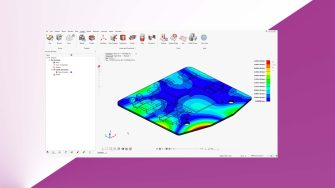Altair Simulation 2022 has been launched with much of the focus on next-generation connectivity, as well as circuit board and electronics design capabilities; as well as a myriad of updates to Altair’s traditional solutions.

This release’s connectivity updates include features that help users simulate antennas with accuracy, get the results they’re looking for and solve bigger problems faster, with a broader user toolset for advanced driver-assistance systems (ADAS) applications in the Altair software.
Altair Simulation 2022 now supports the automation of realistic 5G envelope beam patterns and includes features like new hybrid ray-tracing patterns and rotating doppler effects for ray-based solvers.
Additionally, more connectivity features include support for improved computational performance when simulating larger, more complex antennas and their operating environment. Users will benefit from the power to better simulate full-wave antenna and array characterisations so they can reliably analyse wireless systems.
Users should also gain improved ADAS tools that can better consider sensor types like ultrasound, which increases the number of sensors that can be simulated together. Other new ADAS features include the addition of more application-specific and post-processing tools, such as frequency-modulated continuous-wave (FM-CW) radar simulations that target ADAS applications.
To help accelerating smart device development, Altair Simulation 2022 includes more capabilities for circuit board and electronic design tools that enhance users’ abilities to design and implement smart components, products, and systems.
Altair PollEx now features expanded design verification, signal integrity, and printed circuit board (PCB) modeling functionalities. It also includes cross probe verification like DFx Excel results and a direct ECAD link to Pulsonix and Altium Designer; the latter feature is also included in PollEx for Altium, a free, recently released tool Altair has made available to all Altium Designer customers.
Users can benefit from updates to Altair SimLab, which include typical application functionalities like drop test, multiphysics analysis for PCBs, and thermal management simulation that can cover entire systems, while Altair Simulation 2022 also introduces new tools for power electronics and motor drives, including PSIM, which can handle simulation and design for power supplies, motor drives, control systems, and microgrids.
“The release of Simulation 2022 continues Altair’s tradition of leading in computational science and artificial intelligence,” said Altair CTO Sam Mahalingam
“By adding more features, tools, interfaces, and workflows that let users work faster and more efficiently, we’re enabling a better and more sustainable future. Better simulation makes better, smarter products, and we’re proud to be at the forefront of tomorrow’s connected future.”






